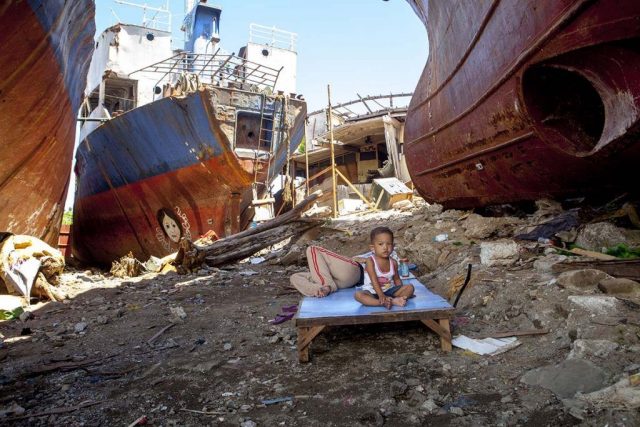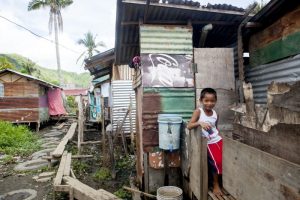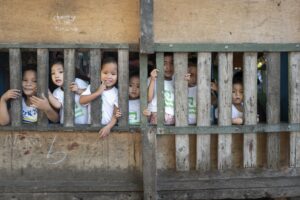How does a child end up in a slum in Southeast Asia?
An overwhelming rural exodus
Southeast Asia is prone to natural disasters. The entire region is prone to tropical flash floodings during the rainy season, both damaging homes and increasing the risk of landslides for further devastation. Indonesia and the Philippines, while also suffering from floods, are also prone to frequent high-magnitude earthquakes and typhoons. All these natural disasters destroy houses, forcing inhabitants to migrate to the cities. Slums house them as the cities themselves lack opportunities.

While natural disasters force people to move to slums in Asia, some simply leave their life in the countryside to find better living conditions in the city, hoping for employment, higher education, and better living conditions. This rural exodus is a defining factor of developing economies, as Nobel prize winner Arthur Lewis understood: the growing economy in the city attracts self-subsistent farmers. But this virtually unlimited workforce quickly outgrows the demand, and millions of ex-farmers end up in slums in Asia bordering the developing cities. The sheer size of the phenomenon and its speed makes developing infrastructures in slums in Asia a challenge, and entire districts end up without basic services.
Learn more about our privacy policy here.

The poverty cycle
Wealth and education can be said to be inherited. As in Western countries, the chances for a child to get a higher degree and a high-paying career are very low in slums in Asia. Poverty thus generates a vicious circle. It deprives children from education and basic necessities, reducing their future prospects. With an entourage in the same situation, the children may not even see a possible different future and have no chance to break out of the cycle of poverty. Overwhelmed by the size of the phenomenon, lacking the necessary funding and often undermined by corruption, local governments often do not prioritize children in the slums, and only a few child education charities step in.

Child Education Charity

This is where a child education charity can step in. A child education charity is a non-profit that targets the root cause of the continuation of this cycle of poverty: access to a good education, to show that pursuing a career is possible and give all the children need to reach that goal. A child education charity also covers basic needs (food, water, healthcare…) so that the child can focus on their future. This is the focus of Children of the Mekong, a child education charity active in 6 countries in Southeast Asia (Laos, Vietnam, Indonesia, the Philippines, Thailand, and Myanmar) currently supporting 60,000 children in need.
Join us now, and give access to education, by sponsoring a child for £28/month.

Further social challenges
The poor living conditions in slums in Asia end up increasing further social challenges. Drug, alcohol, violence against children, and incest rates increase in these areas. To get enough food, the families face difficult decisions, and slums in Asia host as a result a lot of child labor, child trafficking, and child prostitution. In conflict areas, children can also be used as soldiers This context puts a lot of stress on the children and some decide to leave their home, becoming street children, to try to escape from slums in Asia.